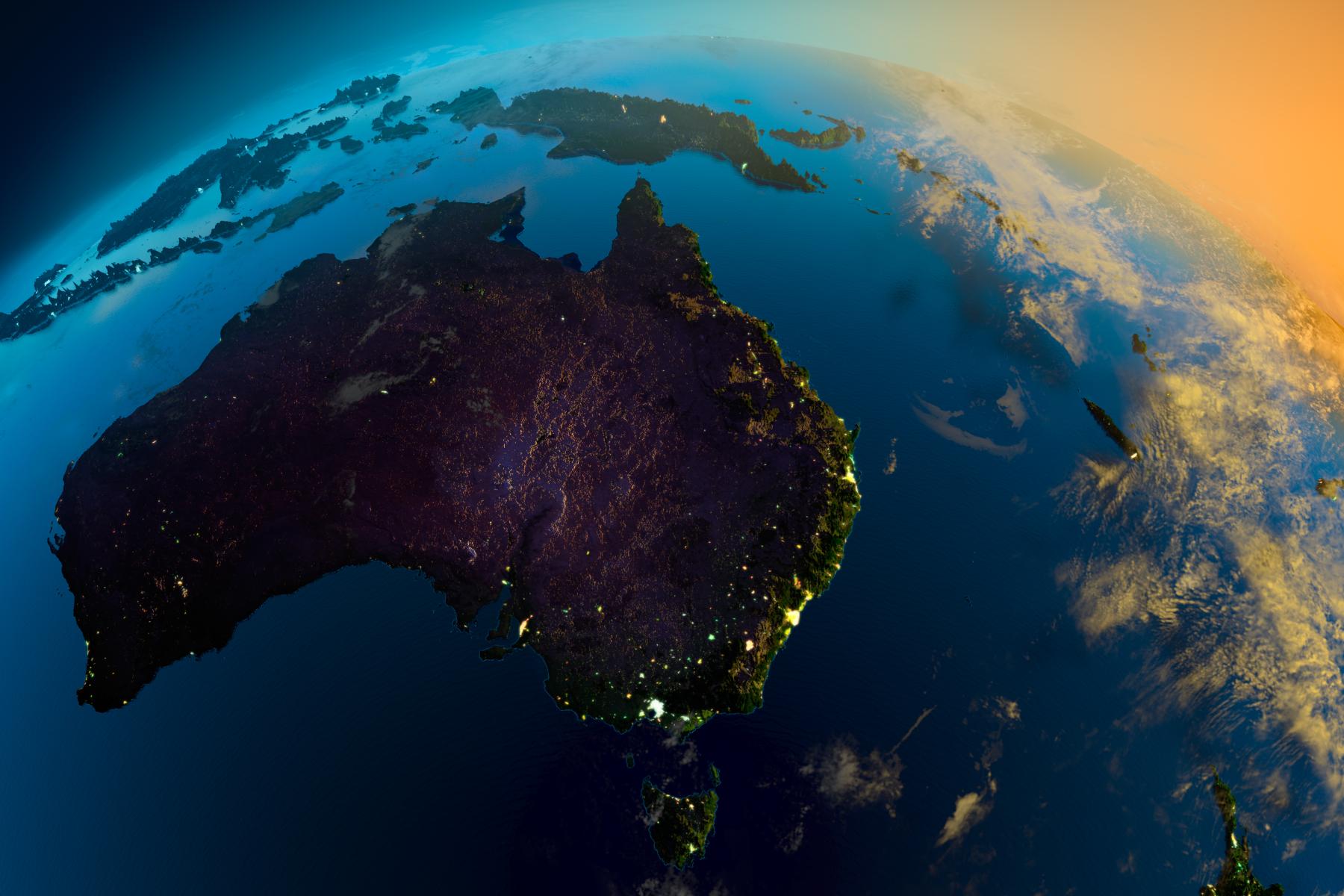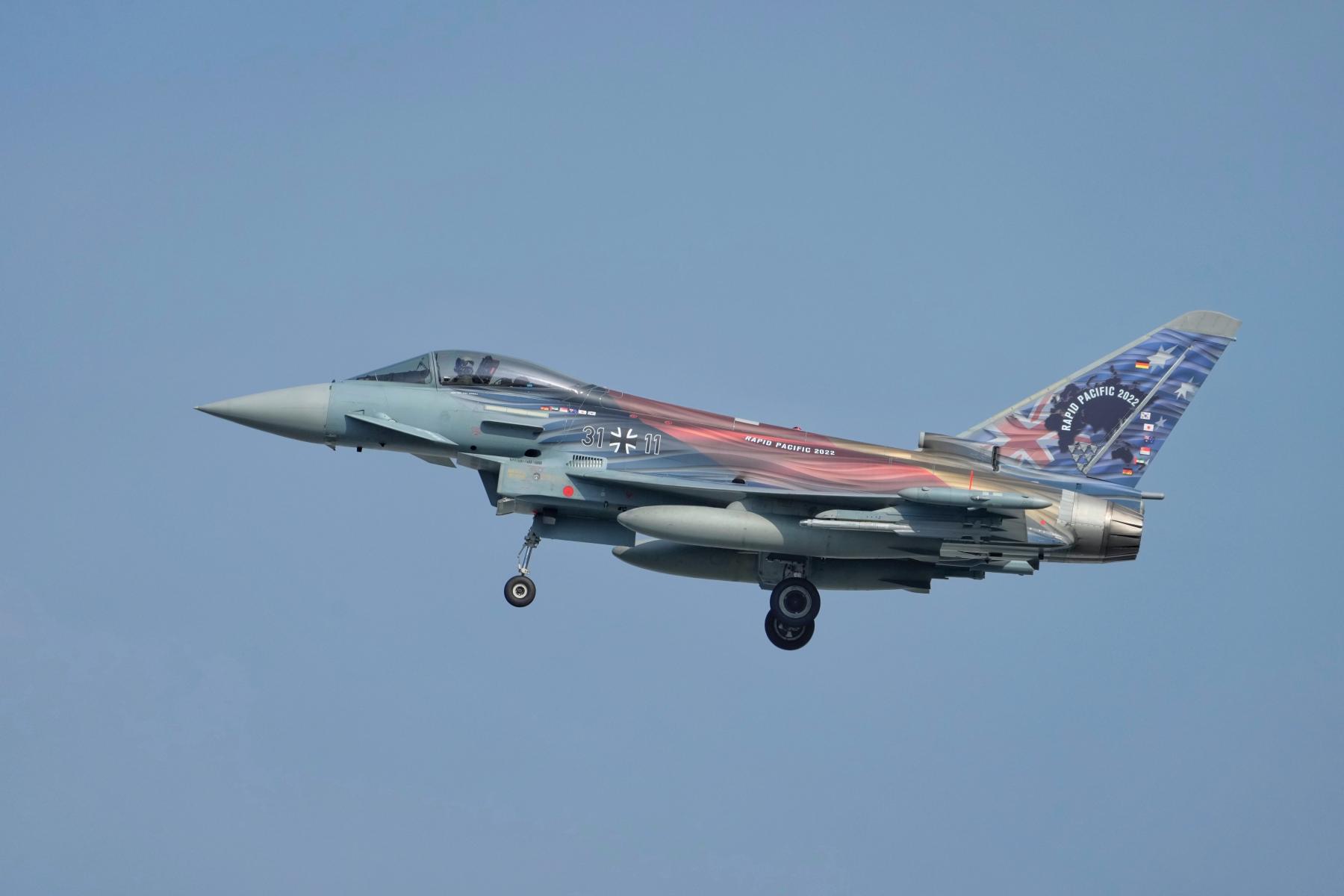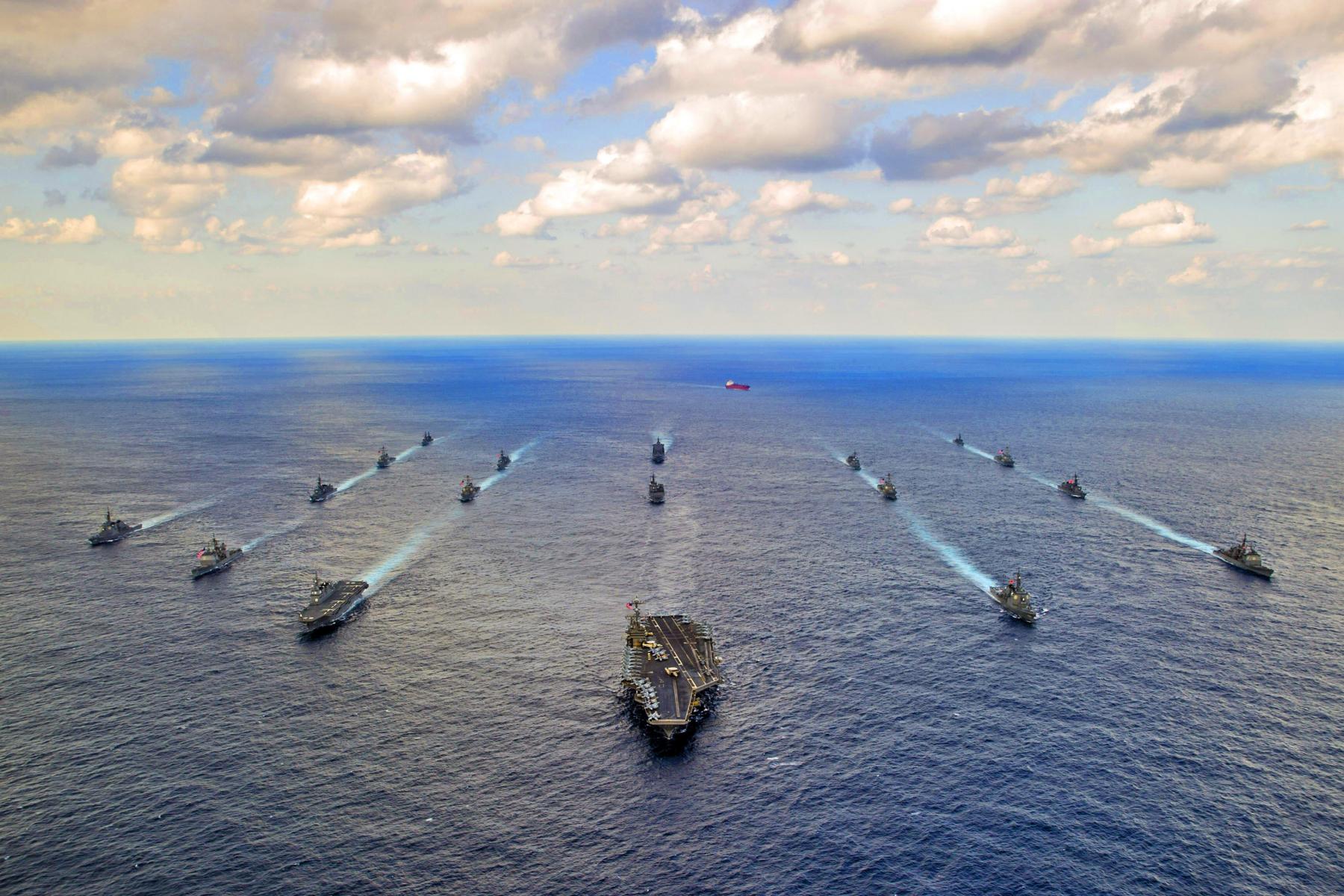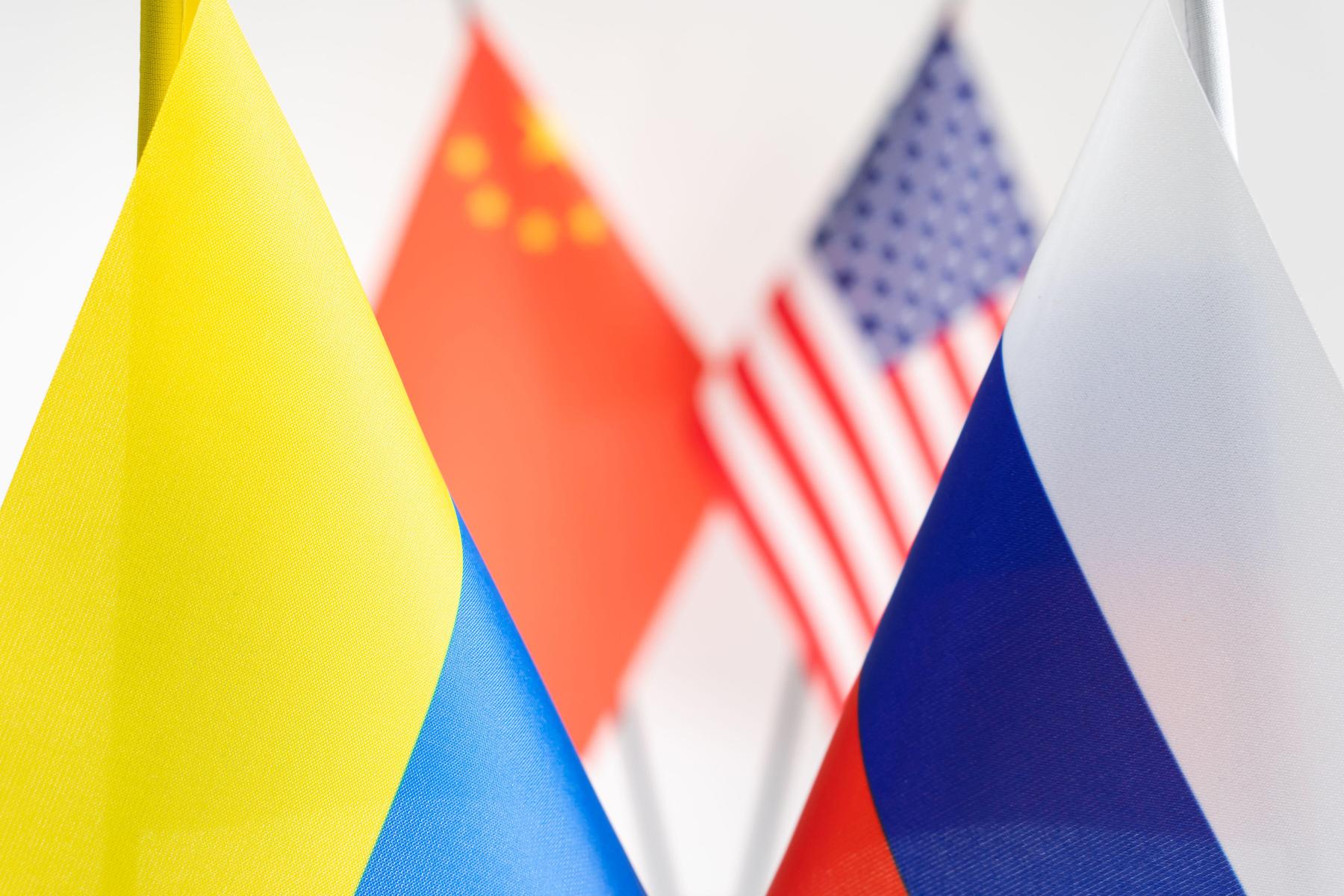Ukraine’s ripple effect on Russia’s Indo-Pacific horizon
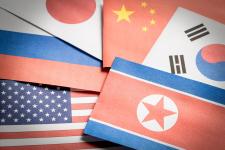
The invasion of Ukraine has fueled hopes in Russia of a reorientation to Asian markets, while also introducing new barriers to Russian relations with many Asia-Pacific states. The Indo-Pacific may be far from Ukraine, but Russia’s war has had wide-ranging ripple effects on the region’s energy security, food security, bilateral ties, and geopolitics.
Russia looks East
With three-quarters of its territory on the Asian continent, Russia has long sought to play a greater role in the Asia-Pacific. Beginning with Nikita Khrushchev, a series of leaders traveled from Moscow to Vladivostok to herald their country’s greater participation in the region, but Cold War tensions and the economic weakness of the Russian Far East would prevent this development. In 2012, when Russia hosted the Asia-Pacific Economic Cooperation (APEC) summit in Vladivostok, the age-old dream of a pivot to Asia appeared to be coming true at long last.
Within five years, however, the Trump Administration’s promotion of a free and open Indo-Pacific introduced new barriers to Russia’s Asian ambitions by involving India, one of its longstanding partners, in the Quad, which is focused on addressing the challenges posed by China, Russia’s strategic partner. For these reasons, Russia has been opposed to the concept of the Indo-Pacific, which it views as an effort to constrain its role in in the region, and speaks instead about its Asia-Pacific interests.
Together, the world’s middle powers – Japan, India, Germany, Australia, Canada, and others – can have a decisive impact on global affairs.
This series of comments from six leading experts explores middle power collaboration in the Indo-Pacific. In response to Russia’s invasion of Ukraine and US-China strategic rivalry, what can middle powers achieve in the pivotal region?
New energy flows to Asia
Since its invasion of Ukraine, some bright spots have appeared on Russia’s Asian horizon—oil and LNG exports to Asia (especially to China and India) have compensated for some of the shortfall from Europe. This has been an important cushion for the Russian economy, which depends on energy revenue for 15% its GDP and half of its export revenue. In 2021, approximately half of Russian crude oil was destined for Europe, as well as 74% of its gas and 32% of its coal, though even then China was the largest single buyer of oil. Since the Russian invasion of Ukraine, Europe’s share of Russian oil has fallen by half to 35%, and more than half of Russian oil now goes to countries outside of Europe. China has scooped up Russian oil, LNG, and coal at bargain prices, and its energy purchases from Russia grew by nearly 41% from $41 billion in 2021 to $68 billion by December 2022. Although Russian oil accounted for less than 1% of India’s oil imports in 2021, in 2022, 22% of India’s crude imports came from Russia, which has become India’s top supplier with deep discounts.
Russia has long sought to be an energy swing producer—according to this logic, developing markets in Asia would increase Russian leverage on European consuming countries and enable Russia to have more balanced foreign relations between East and West. It would take decades to build the first energy pipelines to China, however, and, until 2022, Russian energy exports continued to focus on European markets. Russian gas exports to Europe were largely made by pipeline and cannot be redirected immediately to Asia. For the most part, Asian countries have been buying LNG, which is shipped by sea. Even if plans for new gas pipelines to China move forward (one from the Russian Far East to China and another transiting Mongolia, namely the Power of Siberia 2), for now China only accounts for one-third of the gas Russia sends to Europe.
Russia-India-China triangle
China and India are now Russia’s two most important partners in the Asia-Pacific—energy ties are just one component of their extensive relations. While claiming to be impartial, China has provided rhetorical support for Russian positions on Ukraine—placing the blame for the conflict on NATO, stating that the US “fuels the fire” of the conflict, and spreading Russian Ministry of Defense propaganda about (nonexistent) US biolabs in Ukraine. China has abstained on key UN resolutions criticizing Russian actions and cast a vote in favor of Russia remaining on the UN Human Rights Council. Sino-Russian military ties continue to deepen, according to a five-year agreement signed just before the Russian invasion of Ukraine, and the two countries have participated in several joint military patrols and exercises since the start of the war. Despite Xi’s recent charm offensive in Europe and Asia, in his December 30th video meeting with Vladimir Putin, the PRC leader praised the resilience of Sino-Russian relations and committed to deepening strategic coordination with Russia. For his part, Putin hailed their unprecedented cooperation as a model and called their partnership a stabilizing factor in an increasingly difficult geopolitical environment.
While Xi has spoken out against nuclear threats in the context of the ongoing war on Ukraine, Indian Prime Minister Narendra Modi has been more overtly critical of Russian actions, urging on multiple occasions for Putin to pursue peace. Yet India sets great store by its longstanding military ties to Russia, including licensing and co-production, at a time when tensions in India’s relations with China are running high. Although India has improved ties with the US, including in defense, and is now, largely due to its concern over Chinese intentions and capabilities, participating in the Quad, Russia and India remain committed to their 75-year partnership. With India assuming the chairmanship of the Shanghai Cooperation Organization (SCO) in September 2023, followed by the G-20 in December 2023, Putin remains optimistic about the prospects for bilateral relations with India as well as for Russia’s role in security and cooperation in the Asia-Pacific. Nevertheless, whether or not Russia will be able to balance its ties with China and India in the future remains debatable, as the deepening Sino-Russian rapprochement will raise questions for India about Russia’s reliability in case of a conflict between India and China. Conversely, if Russia becomes more reliant on China, this makes Russia a less desirable partner for India.

Southeast Asia adjusts
Prior to its invasion of Ukraine in 2022, Russia sought to broaden its ties to Asia-Pacific countries beyond its longstanding partners China, India, and Vietnam. Despite the Sino-Russian partnership, Putin provided only limited support for China on South China Sea issues, and there was even some competition for Southeast Asian arms markets between Russia and China. While Russia has faced skepticism about its bona fides as an Asia-Pacific power, Putin has been able to take some comfort in the measured response by Southeast Asian states to his war on Ukraine. Most Southeast Asian states, being acutely sensitive to sovereignty issues, supported the March 2, 2022 UN resolution condemning the Russian invasion (with the exception of Laos and Vietnam, which abstained). However, only Singapore, a close US partner, imposed sanctions on Russia, and ASEAN’s statements on the war did not criticize Russia directly. Russia’s removal from the Human Rights Council also failed to attract much support in the region, with the Philippines, East Timor, and the pre-coup government of Myanmar voting in favor and the other Southeast Asian countries abstaining.
Indonesia’s response is indicative of the unease in much of Southeast Asia over the global consequences of the Russian war on Ukraine. President Joko Widodo’s closing comment to the G-20 meeting in November, which Indonesia chaired, summed it up succinctly: “Stop the war. I repeat, stop the war.” Widodo subsequently undertook a peace mission to Ukraine and Russia, which largely focused on facilitating the export of grains and fertilizer to global markets. For Indonesia and other Southeast Asian states, the Russian war on Ukraine led to spiraling prices for food and energy, the prospect of sanctions, and an even more polarized security environment. Indonesia is the second largest market for Ukrainian wheat and the fourth largest for Russian chemical fertilizer, which is needed to grow local rice. ASEAN countries are major wheat importers, accounting for 15% of global imports, and Indonesia is the largest importer.
Russia was the top arms supplier for Southeast Asia for many years until South Korea overtook it in 2017. Now the threat of sanctions, the moral opprobrium over Russia’s use of force in Ukraine (and perhaps the spectacle of Russian military losses in Ukraine) have led countries in the region to rethink their military cooperation with Russia. Since the Russian invasion of Ukraine, the Philippines have canceled a $216 million helicopter contract in favor of a US equivalent, and even Vietnam, which had been purchasing 70% of its weapons from Russia, its longtime partner, is now considering other options for some systems.
In the past year, the Indo-Pacific has seen a tightening of security relationships, putting many Southeast Asian states that seek to avoid taking sides overtly in an especially difficult position. Despite China’s claims to impartiality on Ukraine, the February 4, 2022 joint statement between China and Russia, followed by a series of joint military exercises and patrols in the Asia-Pacific, have only served to highlight their continuing alignment. Putin and Xi came out against “closed bloc structures” in the Asia-Pacific region, meaning the Quad, AUKUS, and other US alliance relationships, but their own deepening partnership also contributes to a sense of geopolitical polarization in the Indo-Pacific.
East Asia prepares for the worst
The Asian countries most affected by the Russian war are its immediate neighbors, notably US allies Japan and South Korea, as well as North Korea. The Russian invasion of Ukraine has exacerbated an already worsening security environment for Tokyo, as recent Japanese defense documents attest. In this context, deepening Sino-Russian military cooperation has added to the alarm in Japan over China’s assertive moves near Japanese territory. In the January 11, 2022 2+2 (Defense and Foreign Ministers) meeting with the US, the Japanese side expressed their concern over “provocative” Sino-Russian military exercises and patrols near Japan.
South Korea, like Japan, is concerned about the deteriorating security environment in the Indo-Pacific. Interestingly, Korea’s first Indo-Pacific strategy reserved its harshest direct criticism for “Russia’s armed aggression against Ukraine,” which was seen as adversely affecting Indo-Pacific security. By comparison, Korea’s issues with China were raised very obliquely. This is because, in responding to Russia on Ukraine, South Korea is keeping an eye on what lessons North Korea might be drawing, such as the value of nuclear threats and the importance of keeping its nuclear arsenal. Moreover, North Korea has supported Russian positions on Ukraine, even recognizing “annexed” territories. There have been reports of Russian ammunition purchases from North Korea, and even the possibility of 100,000 North Korean troops being sent to Ukraine. While Russia has denied these reports, North Korea may still benefit from Russia’s war by reducing the likelihood of any Russian pressure on Pyongyang on nuclear issues or cooperation on existing sanctions against it. This has prompted South Korean President Yoon Suk Yeol to state that his country was considering asking the US to redeploy nuclear weapons in South Korea and even building a domestic capability.
Ukraine’s long shadow
Russian aspirations of playing a role in a multipolar Asia-Pacific region have been dashed as it draws closer to China. This not only upsets Russia’s long standing dependability as a key partner for India but also alarms some countries like Japan, raising questions about Moscow’s potential role in a PRC invasion of Taiwan. Russia’s former Asian partners in Southeast Asia are now more wary of military cooperation, thereby providing opportunities for new suppliers. A resolution of the North Korean nuclear question may be even further out of reach and perhaps may be entering an even more dangerous phase. Russia’s invasion of Ukraine holds far-reaching and long-lasting consequences for Moscow’s aspirations to play a more substantial role in the Asia-Pacific and on the economics and security across the region.

